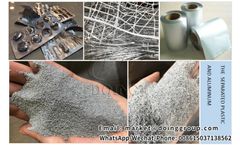Waste Processing Articles & Analysis
10 articles found
Running a hospital without clear, actionable insights is like navigating a stormy sea without a compass. Compliance gaps go unnoticed, unresolved incidents pile up, and critical trends in patient safety slip through the cracks. Decisions become reactive, driven by the latest crisis rather than proactive strategies to prevent them. Every day, hospitals generate a deluge of data, but without ...
Waste medical blister packaging, as a common waste in life, are generally made of aluminum and plastic, which are recyclable materials, as we all know. ...
In recent decades, with the continuous technological breakthroughs in enzyme engineering, it has become more and more widely used in industry, agriculture, medicine and health, energy development and environmental engineering. Food processing applications The biggest use of enzymes in the food industry is starch processing, followed by dairy ...
For example, NorthStar Medical Radioisotopes, in Beloit, Wisconsin, is currently producing molybdenum-99 using two different processes, one that involves no uranium and one that involves using particle accelerators. ...
Type I collagen is mainly distributed in tissues such as skin and tendon, and it is also a protein with a high content of aquatic product processing waste (skin, bone and scale). It accounts for about 80-90% of the total collagen content, and is widely used in medicine. ...
Medical blister packs recycling machine can process waste medical blister packs to get pure aluminum and plastic. ...
Need: Around 50 Kg food waste to be converted daily Already had a biogas plant installed but was having issues with it. Challenge: Space constrain Biogas plant was using up space which could be used for other utilities Existing biogas plant was producing smell and was causing issue in the premises Waste segregation was required among organic ...
There are a number of distinct advantages to the MIFTEC Z-Pinch technology, but two, in particular, stand out; the first being the lack of long-term radioactive waste, and the second being the estimated 50% cost savings compared to current production methods. ...
The method can be used for rapid, direct analysis of nanomaterials in aqueous media with a particular application to dose verification in ecotoxicology studies, analysis of manufacturing process waste streams and raw material analysis. Twelve reference materials having a diameter (dp) traceable to NIST were spiked into 6 different aqueous matrices that included ...
It will discuss the need to improve security at nuclear waste processing and storage sites and the adequacy of current security. It will also discuss the phenomenon of suicide attacks by the bomb carriers and the role of the media in informing and educating the general public of the consequences should such a device containing nuclear material be ...









